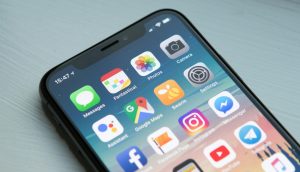When pressed on the future of internet TV, Alexander Manu, who today gives a keynote speech to the Stream conference, talks not of digital devices, but of a behaviour space. For content creators, that means creating “full spectrum entertainment” to connect users with the internet and as many behaviours as they may attempt in that space. As ever with Manu, it’s a provocative and counter-intuitive approach to content creation and delivery.
So we asked the professor at Rotman School of Management and OCAD University in Toronto to expand on how he sees content creators best redefining and exploiting internet TV in the future.
You talk not of technology per se when it comes to media, but of a behaviour space. What is the behaviour, consumer or otherwise, that occupies the internet TV space?
Manu: A behaviour space includes all the things that allow an individual to perform a function in that space. The internet is a behaviour space because it connects any activity that you perform on the internet. Or, to give you a better example, the iPhone. The iPhone is not a product, but a behaviour space. Do you have an iPhone?
Yes, I do have an iPhone.
Manu: Okay, so to look at it as a product, it’s described in very simple and geometric terms. But that is not its value. Its value is proportional with how many behaviours you can activate through it.
You mean the different apps on it?
Manu: Exactly. So each app is a value that is different from any other app, and the totality of the value propositions creates a behaviour space.
Presumably, internet TV offers new places to play in, and new devices to play on. Can you expand on what those might be?
Manu: Exactly, and the emphasis here is on “new.” Instead of being transferred from linear TV, or the mobile platform, what needs to happen is a completely new form of engagement. And it’s new for a very simple reason: it’s mobile. And linear TV was never mobile. So being mobile doesn’t mean I can carry my show with me. It means I have different opportunities of engagement and different locations where I am mobile.
You talk of full spectrum entertainment to best engage web TV viewers. Please explain the concept.
Manu: Full spectrum means a number of attributes, including that the experience needs to appeal to all the senses, including intellect and emotion. So, pleasure comes from that experience of learning providing something new. Curiosity being satisfied, or curiosity being triggered and satisfied, is also an enormous pleasure button.
Give us an example of full spectrum entertainment that worked on multiple digital platforms.
Manu: The Stratos jump, you know the Red Bull jump from outer space. Wasn’t that a full spectrum experience? What were the elements? It was a historical moment, it was the first of its kind, it was truly an emotional thing and also it had a spiritual dimension. The guy, Felix Baumgartner, is alone, and you see the curvature of the Earth. Then you look at what are the components of this type of experience – and I am going to talk about the seven dimensions of an experience [at Stream] – which qualifies as a full spectrum. What I am trying to say is that a full spectrum experience attacks you at every sense. It transforms you.
So web content needs to trigger these sensory experiences to encourage pleasure and play in the internet TV space?
Manu: That’s one of the ways. The iPhone was supposed to be just a phone. And now you can do a billion things with it. When downloading applications, you trigger curiosity. And you want to discover their value for you. The ones you keep using are the ones that actually give you value. So the value of any kind of entertainment is your satisfaction.
So how can internet TV creators grow and sustain audience interest in full spectrum entertainment?
Manu: The primary delivery for this new entertainment will not be a device like we have today, but it will be presumably something like Google Glass. So you have to combine a couple of technologies. Google Glass is a device, a device with cloud computing as a connection. And it has a location trigger, and it has an augmented reality. It will superimpose itself over stuff you want to see. At that moment, you will realize that the format has changed. You are not even talking about the third screen, but you are talking about the fourth screen. So it’s a whole new game.
You talk of not letting the future take you by surprise, and meeting and moving into the future with speed. How should creators move into the future of internet TV?
Manu: By understanding what is the critical component. Take the iPhone. The critical component here is mobility. So the critical component is not the delivery of content via a different device, for innovation and new content. It is the fact that the device is with you at all times. You cannot possibly give me the same entertainment when I am moving and I am arriving at different watching stations, or while in transit. I want something new. The critical thing is mobile content.
Blockbuster didn’t respond in time to industry disruption from Netflix, nor arguably did BlackBerry fend off the competitive threat from the Android and iPhone devices in time. Have broadcasters done enough to address the threat of web TV players?
Manu: No. Most of the companies I have studied so far are seeing it as a different system, not as a new opportunity. So here’s an example. We painted for so many years with oil-based paints, and then to we moved to acrylic. Acrylic is not just another type of paint. It is a new form of expression. So we can do things way faster, I can finish a painting in one day. If I can finish a painting in one day, I can paint people on stage. The bottom line is this: mobile internet TV is a new form of expression. The first pathway is going to enhance what you are getting now. The second one is going to expand to another domain, and the third one is to redefine what this is. Expand, enhance, redefine are the key elements. So for a full spectrum company tomorrow, they are going to start directly with redefining, they have nothing to lose.
Right now, the broadcasters are trying to change themselves slowly to respond, but you can’t change slowly. Change is change. You don’t go slowly to a tablet to read books; you go directly to a tablet to read books. And some people say, “Well, I will never read a book on an electronic tablet,” and the reality is that right now, more people read by tablet than by books. So, reality right now is that 80% of the people that have a mobile device look at it while they watch TV.
























